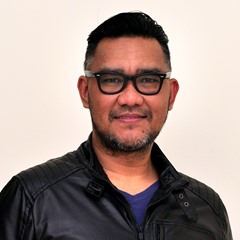Significant developments in the Philippines’ Islamic banking and finance sector have “set the stage” to welcome new players, including banks in Qatar, an official of the Bangko Sentral ng Pilipinas (BSP) has said.
During a panel discussion held recently on the sidelines of the ‘PH Dialogue: Economic Outlook and Opportunities’ in Doha, BSP Assistant Governor Arifa A Ala told Gulf Times that the Islamic Banking Law or ‘Republic Act (RA) 11439’ has liberalised the ownership of banks in the Philippines and provided greater flexibility.
“One mode of operating in the Philippines is that a foreign bank, such as a bank from Qatar, can own up to 100% of an existing bank in the Philippines. It can also be through a branch. It can establish a branch in the Philippines or it can be through the creation of a subsidiary, fully owned by the foreign bank,” Ala explained.
“It can be a full-fledged Islamic bank or it can also be an Islamic Banking Unit, so the law has provided the government with full flexibility in terms of the structure of the Islamic banking operations,” she continued.
Ala further stressed that the Philippine government has also established the Shariah Supervisory Board through the joint efforts of the Department of Finance, the BSP, the National Commission on Muslim Filipinos, and the Bangsamoro Government.
“The primary responsibility of the Shariah Supervisory Board is to issue opinions on Shariah compliance of Islamic banking products, so we have set the stage; we have established the key and necessary infrastructure that will make the operation of an Islamic bank in the Philippines viable,” Ara pointed out.
The ‘PH Dialogue’ gathered Qatari private sector officials and representatives from Qatar’s business community, who witnessed a keynote address from the Philippines’ finance secretary, Benjamin E Diokno.
Diokno led a high-level economic delegation to Qatar, including BSP Deputy Governor Francisco G Dakila Jr, Department of Budget and Management Secretary Amenah F Pangandaman, and National Economic and Development Authority Secretary Arsenio M Balisacan.
During the panel discussion, Balisacan also told Gulf Times that the Philippines is welcoming foreign direct investments (FDI) to aid the country’s energy sector as it transitions to renewable and cleaner sources of energy.
“We have a plan for energy transition and that is to increasingly move our energy consumption from traditional ones to cleaner technologies, including renewable energy. That’s what we are looking at and so, we welcome investment in those areas.
“We are in a hurry to move in that direction because we have this opportunity to move the sourcing of energy as we are transforming the economy, and we need a lot of energy to get the economy moving rapidly,” Balisacan stressed.
Balisacan’s presentation during the dialogue revealed that FDI in the Philippines’ energy sector “will be pivotal to the country’s socio-economic transformation.”
“By 2030, the Philippines will require a 35% renewable energy (RE) share in its power generation mix and 50% by 2040 under the Clean Energy Scenario of the Philippine Energy Plan 2020-2040. This requires a total investment amount of about P5.8tn or $103.6bn in RE power projects by 2040,” Balisacan said.
In 2021, Qatar announced the North Field Expansion project, which comprises North Field South and North Field East that will increase the country’s liquefied natural gas (LNG) production to 126 mtpy by 2026 or 2027.
Department of Energy Secretary Raphael P M Lotilla, in his message in the Natural Gas Development Plan (NGDP), stated that “the Philippines is facing a significant challenge with respect to the natural gas supply.”
The NGDP was completed by the Department of Energy and the Philippines Statistical Centre Research Foundation, Inc in September 2022. The plan aims to attract investments in the country’s downstream natural gas industry.
Lotilla’s message in the NGDP further stated: “Part of our efforts to address this challenge is to look for alternative sources of natural gas. It also aligns with our goal of transitioning to cleaner energy and a low-carbon future.
“We acknowledge, however, that looking for alternative sources of natural gas and transitioning to cleaner energy sources, such as liquefied natural gas, would require corresponding infrastructures in place. And this would also require an investor’s substantial capital investment.”

From left: Department of Budget and Management undersecretary Margaux Marie V Salcedo; Department of Budget and Management secretary Amenah F Pangandaman; Department of Finance secretary Benjamin E Diokno; National Economic and Development Authority secretary Arsenio M Balisacan; Bangko Sentral ng Pilipinas deputy governor Francisco G Dakila Jr, and Bangko Sentral ng Pilipinas assistant governor Arifa A Ala during the ‘PH Dialogue: Economic Outlook and Opportunities’ held recently in Doha. PICTURE: Thajudheen



